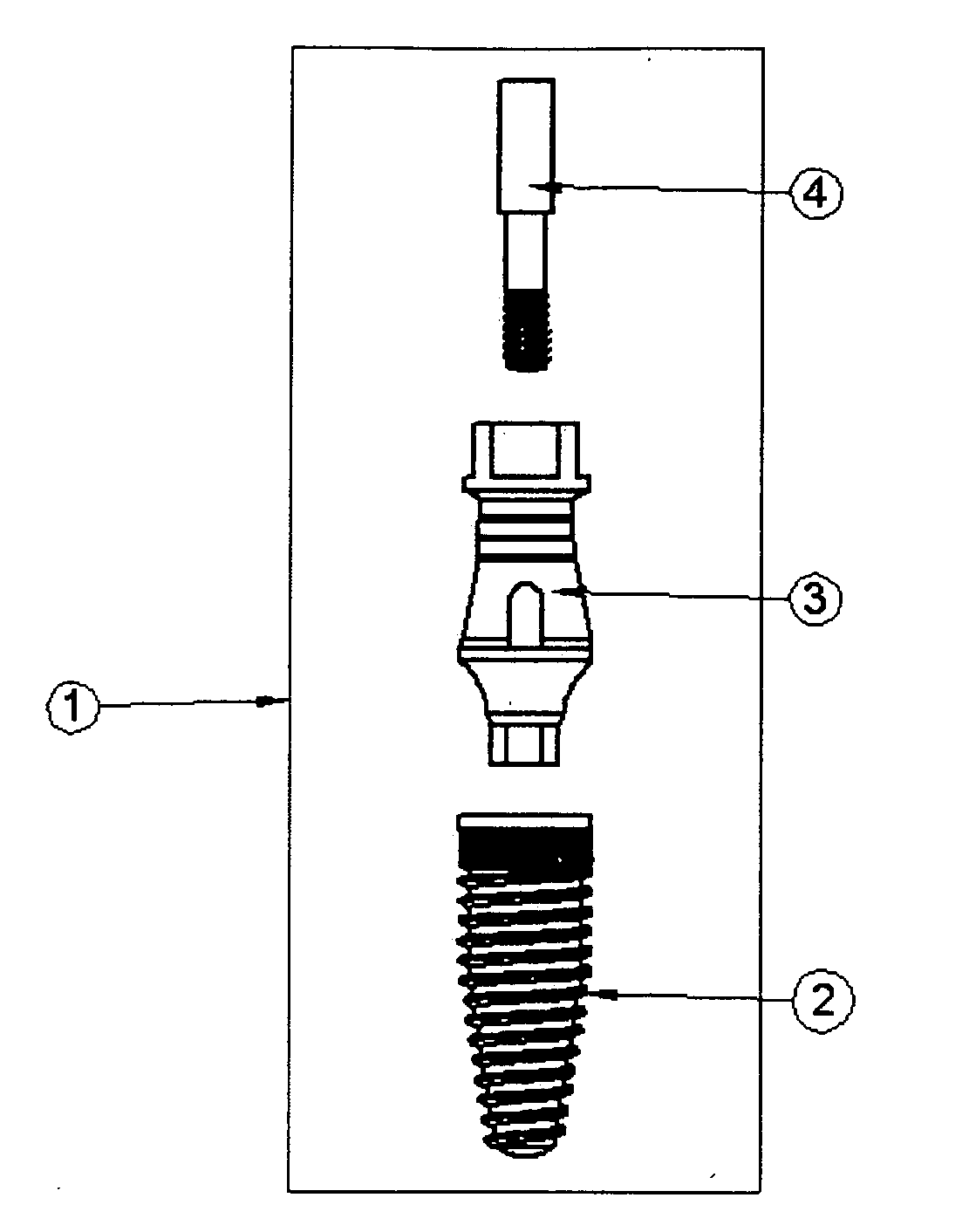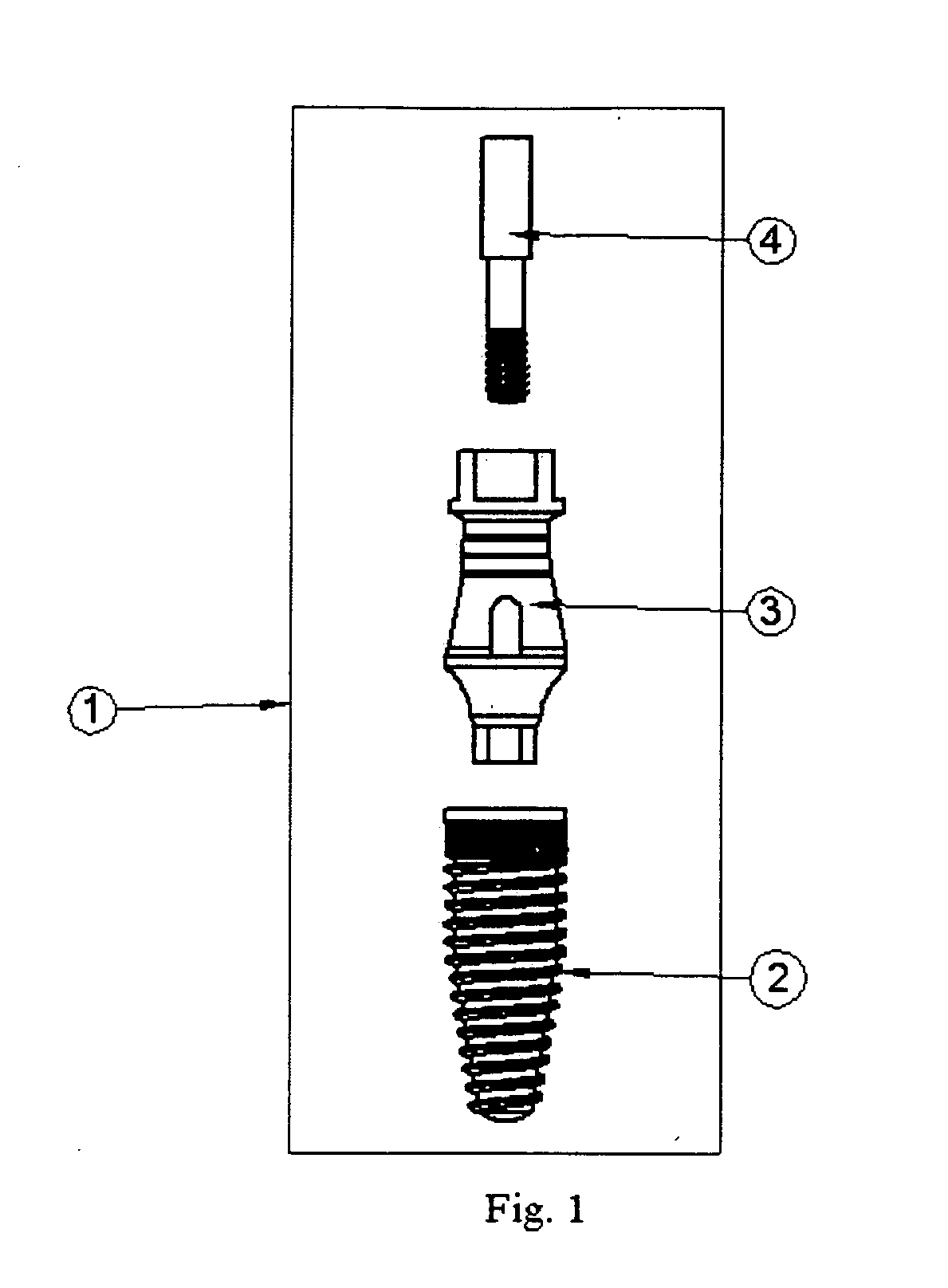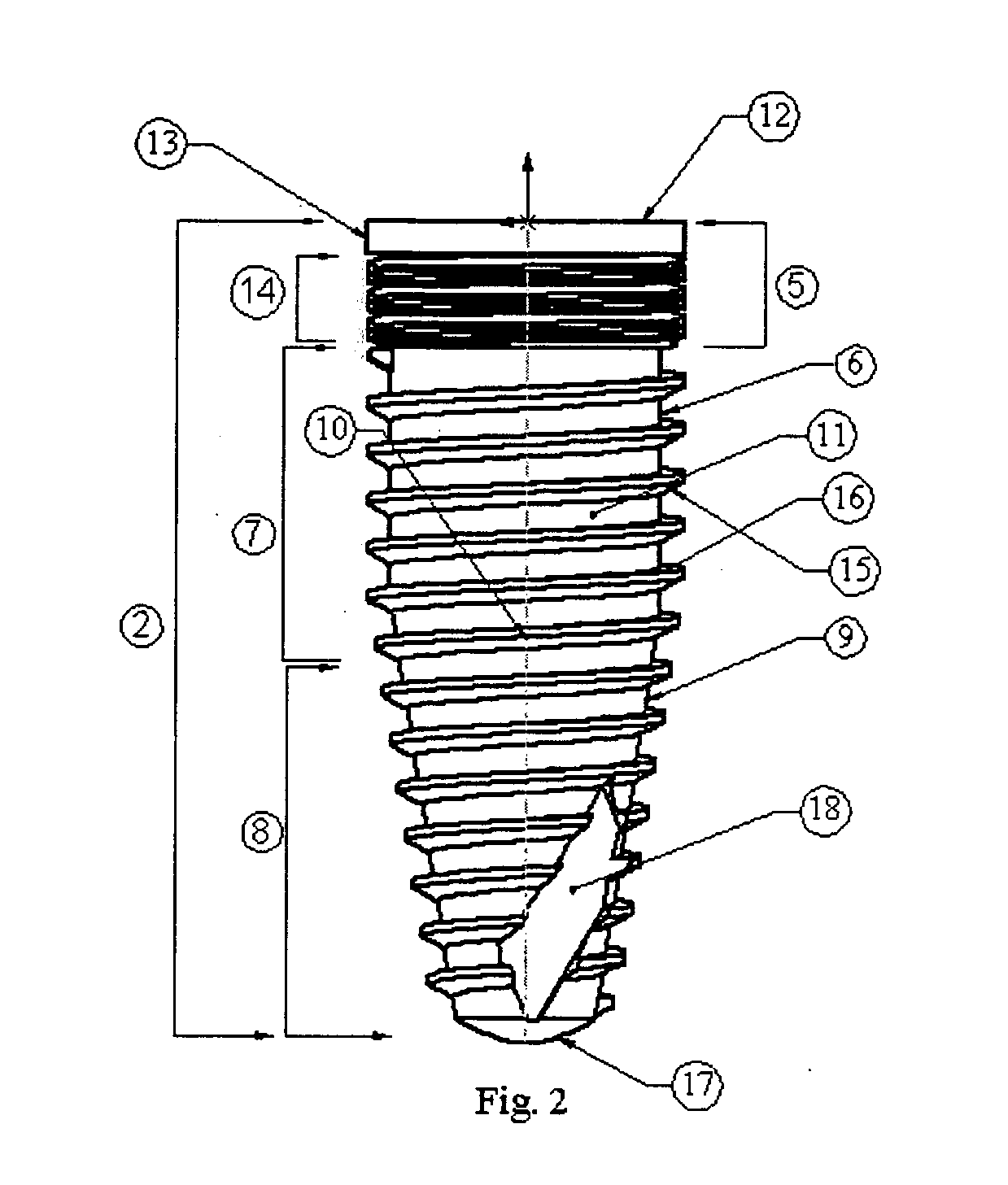Dental implant system
- Summary
- Abstract
- Description
- Claims
- Application Information
AI Technical Summary
Benefits of technology
Problems solved by technology
Method used
Image
Examples
example 1
Finite Element Study in Support of the Present Invention
[0165]Finite Element Analysis (FEA) is a computer based numerical technique for solving wide range of engineering problems. It can be used to calculate deflection, stress, strain, vibration response, buckling behavior and many other phenomena. It can also used to analyze wide range of material models such as isotropic, orthotropic, anisotropic etc., FEA is be used to simulate the wide range of material response such as linear / non-linear response, elastic and plastic deformation and also time independent / dependent material responses. The computer is required because of the considerable number of numerical calculations required to analyze the structure behavior for the given external loads. A mesh is needed in FEA to divide the whole domain into elements.
[0166]It is the process of creating a mesh, elements and their respective notes and defining boundary conditions. In the Finite Element method, a struct...
example 2
[0217]Initially an FEA model (FIG. 12) was created for the individual parts of the implant system (implant fixture and multifunctional component / abutment) and the cortical / cancellous bone surrounding the implant system. A tension force of 450 N was applied individually on the abutment / multifunctional component, implant fixture, cortical bone, and the cancellous bone.
[0218]After the analysis of the FEA model, the von misses stresses generated in the abutment at the top portion are in the range of 10-38 MPa, at the middle portion in the range of 4-29 MPa and at the lower, portion in the range of 13-32 MPa.
[0219]After the analysis of the FEA model, the von misses stresses generated in the implant fixture on the external surface at the crestal module are in the range of 10-48 MPa, in the middle threaded portion in the range of 5-22 MPa, and in the apical area in the range of 1.5-10 MPa. The internal portion of the implant fixture generated 10-35 MPa of stresses where as the top platform...
example 3
[0222]An FEA model was generated to determine the stresses developed in the implant fixture having different types of threads i.e. Buttress, Reverse buttress, Buttress with microthreads and V shape under 450N of tensile type of load / forces. The FEA model shows the perspective view of the implant fixture under tensile forces.
[0223]In the FEA model of the implant fixture with the Buttress threads FIG. 13(a) when the 450 N of tensile force is applied, the external surface of the implant shows variable values of von misses stress in the range of 0.29-48.13 MPa. The crestal module / upper part of the implant exhibit stresses in the range of 5.61-16.24 MPa, the middle threaded portion exhibit forces in the range of 0.29-48.13 MPa, and the lower threaded portion exhibit the forces in the range of 0.29-5.61 MPa. The model shows that the von misses stresses are uniformly distributed and the highest stresses are in the body portion of the implant fixture, thus the implant fixture can withstand ...
PUM
 Login to View More
Login to View More Abstract
Description
Claims
Application Information
 Login to View More
Login to View More - R&D
- Intellectual Property
- Life Sciences
- Materials
- Tech Scout
- Unparalleled Data Quality
- Higher Quality Content
- 60% Fewer Hallucinations
Browse by: Latest US Patents, China's latest patents, Technical Efficacy Thesaurus, Application Domain, Technology Topic, Popular Technical Reports.
© 2025 PatSnap. All rights reserved.Legal|Privacy policy|Modern Slavery Act Transparency Statement|Sitemap|About US| Contact US: help@patsnap.com



